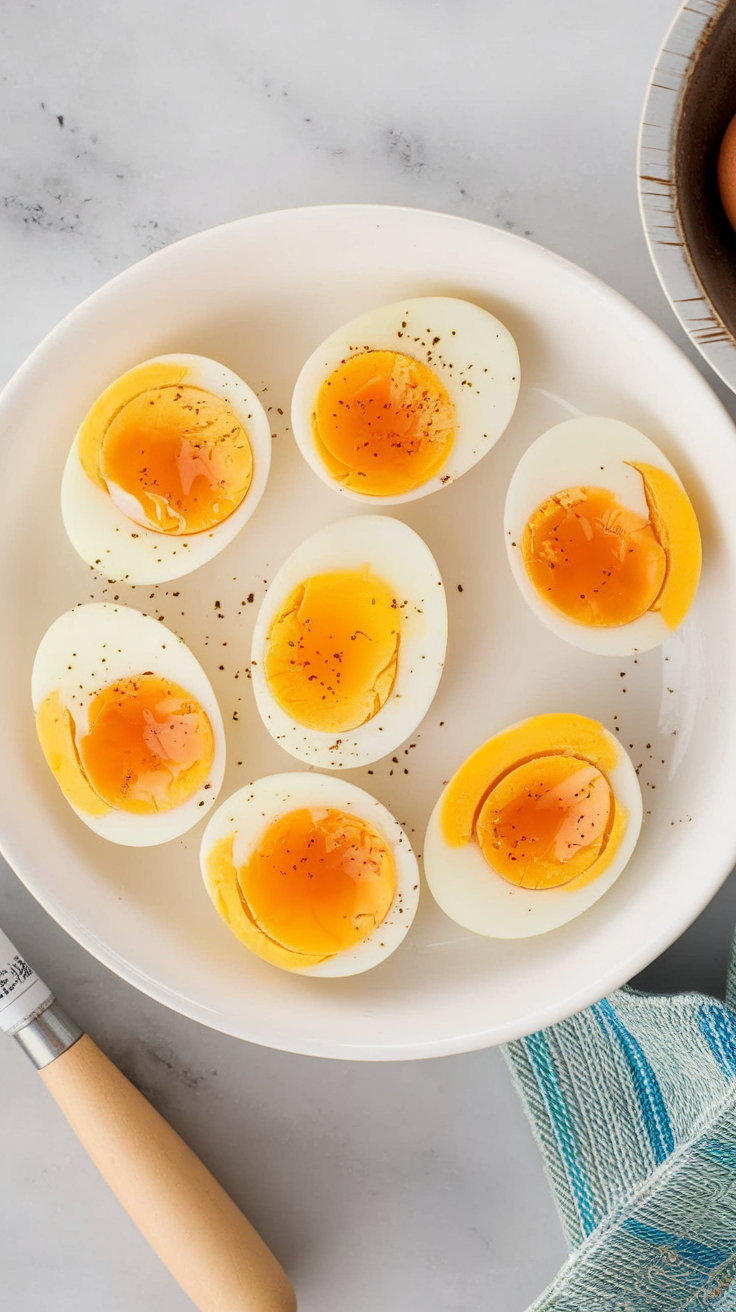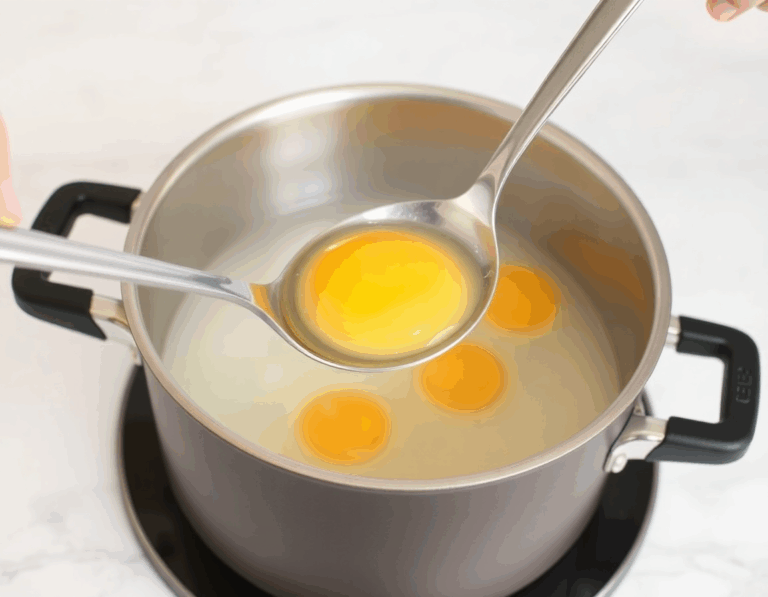Ah, the elusive perfect soft boiled egg—it’s like finding a four-leaf clover or catching the last bus just in time. They say patience is a virtue, and when it comes to eggs, it’s a necessity. Last weekend, I found myself gazing into the pot, the steam rising like whispers of a promise, waiting for that magical moment of yolky perfection.
Steps
- Fill a medium-sized pot with water and bring it to a gentle simmer over medium heat, avoiding a full boil.
- Using a slotted spoon, carefully lower the eggs into the simmering water. Allow them to cook for 7 minutes (or 6 minutes for a runnier yolk).
- While the eggs are cooking, prepare an ice bath by filling a large bowl with cold water and adding a handful of ice cubes.
- Once the timer goes off, immediately transfer the eggs from the simmering water to the ice bath. Let them cool for at least 3 minutes to stop the cooking process.
- To peel the eggs, gently tap the bottom to crack the shell. Slide a small spoon between the egg and its shell, moving it around to loosen and remove the shell. Repeat with remaining eggs.
- Season the peeled eggs with salt and pepper to enjoy, or use them as a topping for dishes like toast or grain bowls.
Ingredients
- Eggs (quantity as desired, typically 2 to 4)
- Water (enough to fill a medium pot)
- Ice (a handful, to prepare an ice bath)
- Salt (to taste, for seasoning)
- Pepper (to taste, for seasoning)
Nutritional Values
Calories: 140 | Total Fat: 10g | Saturated Fat: 3g | Cholesterol: 372mg | Sodium: 124mg | Total Carbohydrate: 1g | Dietary Fiber: 0g | Sugars: 1g | Protein: 12g
FAQ
- How long should I cook soft boiled eggs for a gooier yolk?
- For a softer, more gooey yolk, cook your eggs for about 6 1/2 minutes. If you prefer a slightly firmer yolk, aim for 7 minutes.
- Why is an ice bath necessary for soft boiled eggs?
- An ice bath is crucial because it halts the cooking process, ensuring that the yolks remain delightfully runny. It also makes peeling the eggs much easier.
- What should I do if my eggs crack while cooking?
- Ensure that the water is at a gentle simmer rather than a rapid boil. If the water boils too vigorously, the eggs may crack against the pot.
- How do you peel soft boiled eggs without damaging them?
- Lightly tap the bottom of the cooked egg to crack the shell. Then, carefully use a small spoon to loosen and remove the shell. This method might require a bit of practice.
- How can I serve soft boiled eggs in a unique way?
- For a sophisticated touch, serve the egg in an egg cup without peeling it. Crack the top of the shell and enjoy the egg with seasoning directly from the shell.
Tips
- Adjust Cooking Time for Desired Yolk Consistency: Tailor the cooking time to your preference for the yolk’s texture. For a runnier yolk, aim for around 6 1/2 minutes, while 7 minutes will yield a more jammy yolk with some parts beginning to set.
- Maintain a Gentle Boil: Ensure the water remains at a gentle boil to prevent the eggs from cracking. The water should gently bubble, avoiding a vigorous boil that might cause the eggs to bounce and crack against the pot.
- Essential Ice Bath Step: Don’t skip the ice bath. It halts the cooking process, preserving the desired yolk consistency, and makes peeling the eggs significantly easier.
- Peeling Technique with a Spoon: To peel the eggs, gently tap the bottom to crack the shell, then use a small spoon to slide between the egg and shell, loosening it for easy removal. This method may require some practice for perfection.
Equipment
- Slotted Spoon – Useful for carefully lowering eggs into boiling water and removing them without cracking.
- Egg Cup – Handy for serving soft boiled eggs if you prefer to eat them directly from the shell.
- Small Spoon – While common, a special egg peeler or dedicated small spoon can be helpful for peeling.

